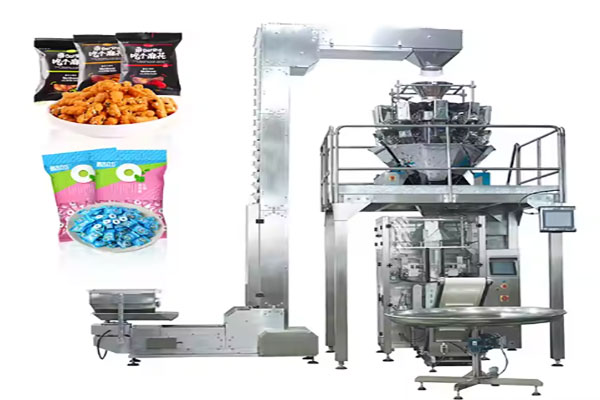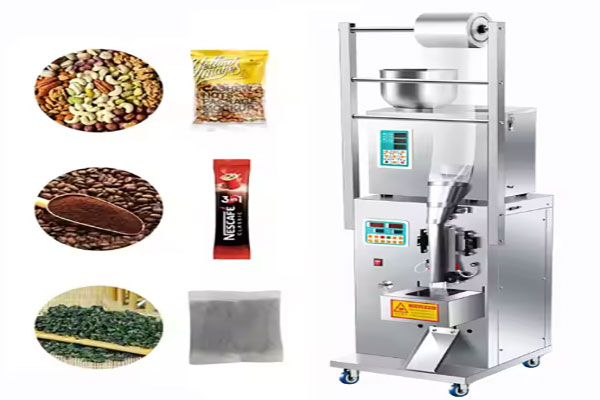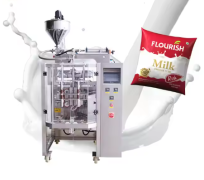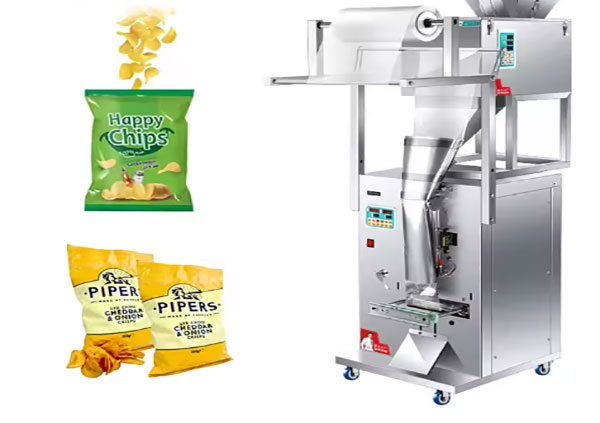How much does food packing machine cost?
Tuesday September-16 2025 16:46:50
Food packing machine price varies greatly depending on the machine model. The price of small bag packaging machines is about $1,000-5,000, which is suitable for start-ups; mid-range semi-automatic models are about $5,000-20,000, equipped with a touch screen control system; fully automatic high-speed models can reach $20,000-30,000, with integrated weighing and labeling functions. Mainstream packaging bag types include three-side sealed bags, self-supporting bags for liquids or powders, back-sealed bags, and four-side sealed bags. The output ranges from 10-30 bags/minute for small machines to 100-300 bags/minute for high-speed machines, suitable for granules, powders, liquids, blocks and other materials.
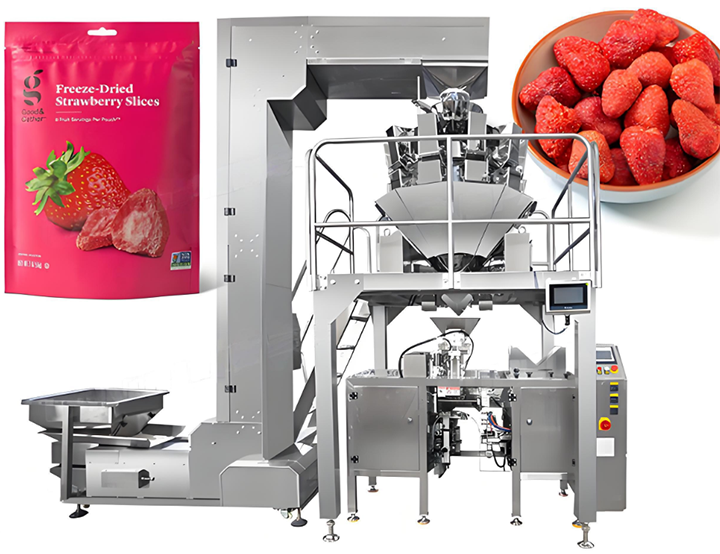
How much does food packing machine cost? Working video demonstration
>
How much does food packing machine cost?
The price of a food packaging machine varies depending on its type, capacity, and level of automation. These include dry food weighing, filling, and packaging machines, candy packaging machines, vertical packaging machines, liquid filling machines, multi-head weighing machines, and pillow packaging machines. These machines can meet packaging needs for granules, liquids, powders, and other products, with a capacity of 20-200 bags per minute. The following is a general range of food packaging machines:
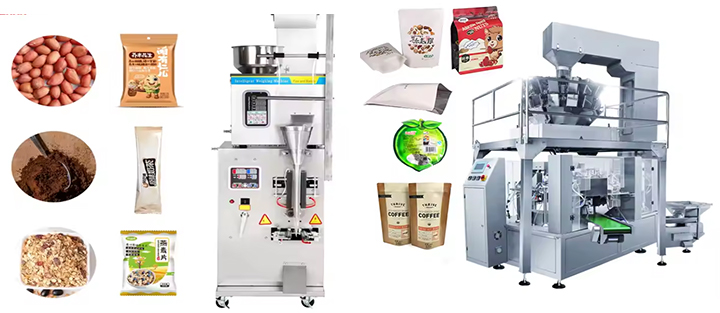
Dry food weighing, filling, and packaging machines typically utilize a multi-head weighing system combined with a vibrating feeder and a PLC control system. Suitable for dry goods such as nuts and beans, these machines accurately weigh within ±0.5 grams and automatically fill and package. They have a capacity of 30-100 bags per minute and cost between $5,000 and $15,000.
Candy packing machines are often equipped with servo motor drives and photoelectric positioning devices, along with automatic film holder correction. They are suitable for all types of candies, support three-side seal and twist-tie packaging, and can produce 150-200 bags per minute. They are compatible with aluminum foil and OPP film, and are priced between $3,000 and $10,000.
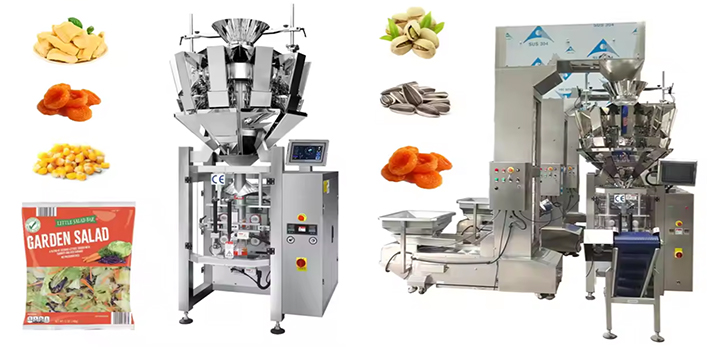
Vertical packing machines feature a stainless steel body and PLC control, employing a vibrating plate for feeding and a heat-sealing cutter for forming. They offer durable construction and precise operation. They are suitable for packaging granules and powders, with adjustable bag sizes from 50 to 500 grams and a throughput of 20 to 50 bags per minute. They are priced between $1,000 and $5,000, and are suitable for small to medium-sized production runs.
The liquid filling machine is driven by a servo motor and equipped with a 316 stainless steel filling head. Volume can be set via a touchscreen. The material is corrosion-resistant and easy to operate. Suitable for filling sauces and cooking oils, it boasts an accuracy of ±1%, a filling volume of 50-1000 ml, and a production capacity of 30-80 bottles per minute. Prices range from $5,000 to $15,000.
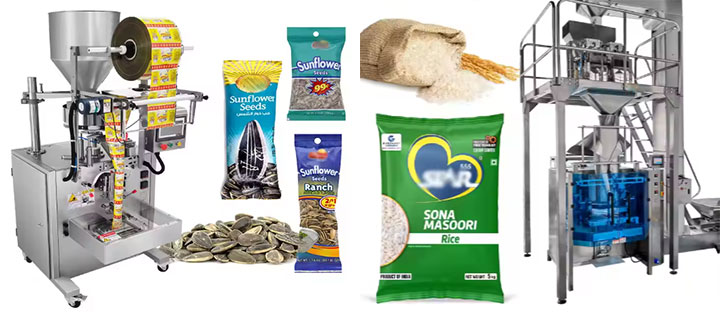
The multi-head combination weighing machine, equipped with an 8-16-head weighing system, is equipped with a vibrating feeder and a centralized control box for efficient and accurate weighing. It is suitable for snacks and nuts, with a dynamic weighing error of only ±0.5 grams and a production capacity of 40-120 bags per minute. Prices range from $10,000 to $30,000, making it suitable for bulk packaging needs.
The pillow packaging machine is suitable for materials such as candy and biscuits. It uses a servo motor connecting rod and is equipped with photoelectric positioning and automatic film frame correction functions. It has a stable and precise structure. It can achieve three-side sealing/four-side sealing, with a packaging speed of 200 packages/minute. It supports aluminum foil and composite film materials. The equipment price range is US$10,000 to US$50,000.
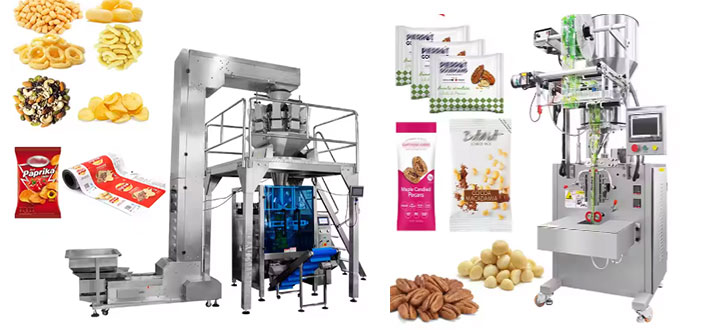
Food packing machine packaging bag types
Food packaging machines can accommodate a variety of bag types, including three-side seal bags, stand-up pouches, back-seal bags (center-seal bags), four-side seal bags, vacuum bags, and laminated film bags. Each bag type has its own unique structural design and application scenarios, meeting the packaging needs of different food categories.
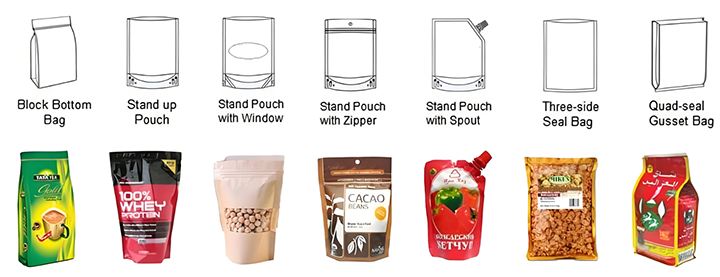
Three-side seal bags are heat-sealed on both sides and the bottom to create an upward-opening structure. They are mostly used for small packages such as snacks and dry goods, with a capacity range of 5g to 500g. Self-supporting bags have a vertical bottom and are often equipped with a zipper or a suction spout. They are suitable for liquid and powdered products such as juice and milk powder, with a capacity of approximately 50ml to 1000ml. Back-seal bags (center-seal bags) have a heat-sealed center on the back and a flat front that is convenient for printing. They are suitable for candy and puffed foods, with a capacity of 20g to 1kg. Four-side seal bags are sealed on all four sides to evenly distribute the contents. They are commonly used for sauces and frozen foods, with a capacity of 100g to 5kg. Vacuum bags are vacuum-sealed to extend the shelf life and are suitable for perishable products such as meat and seafood. They have a capacity of 100g to 2kg. Composite film bags are made of multiple layers of materials such as PET/AL/PE, with moisture-proof and oxygen-barrier properties. They are suitable for demanding products such as coffee and pharmaceuticals, with a capacity of approximately 10g to 500g.
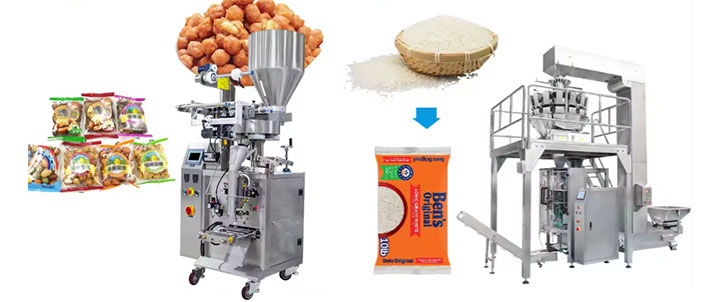
food packing machine manufacturers
Our factory has extensive experience manufacturing food packing machines, with sophisticated processes from design to manufacturing. We manufacture a variety of packaging machines, including small-scale food packaging machines, dry goods weighing and filling packaging machines, and candy packaging machines, to meet the packaging needs of small and large businesses alike, and have received positive reviews. Please contact us for customized solutions.
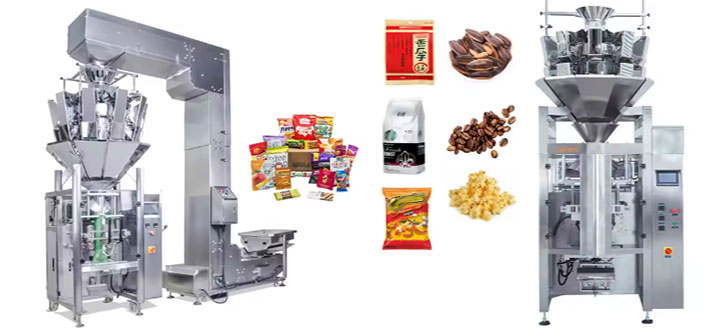
How much does food packing machine cost? In general, the differences in price and functionality of food packaging machines reflect the diversity of market demand. From basic equipment costing thousands of yuan suitable for start-ups to high-end models that meet the needs of industrial production, the technical configuration and production capacity have shown a step-by-step leap. When selecting equipment, three factors need to be considered comprehensively: first, the product characteristics determine the type of packaging bag and the sealing process, such as particle fluidity, liquid viscosity, etc.; second, the production capacity requirements match the machine speed to avoid idle resources or production bottlenecks; third, scalability requirements, such as whether it will be necessary to connect intelligent modules such as inkjet printers in the future. Food packaging machines make factories more efficient and promote the development of the packaging industry.
